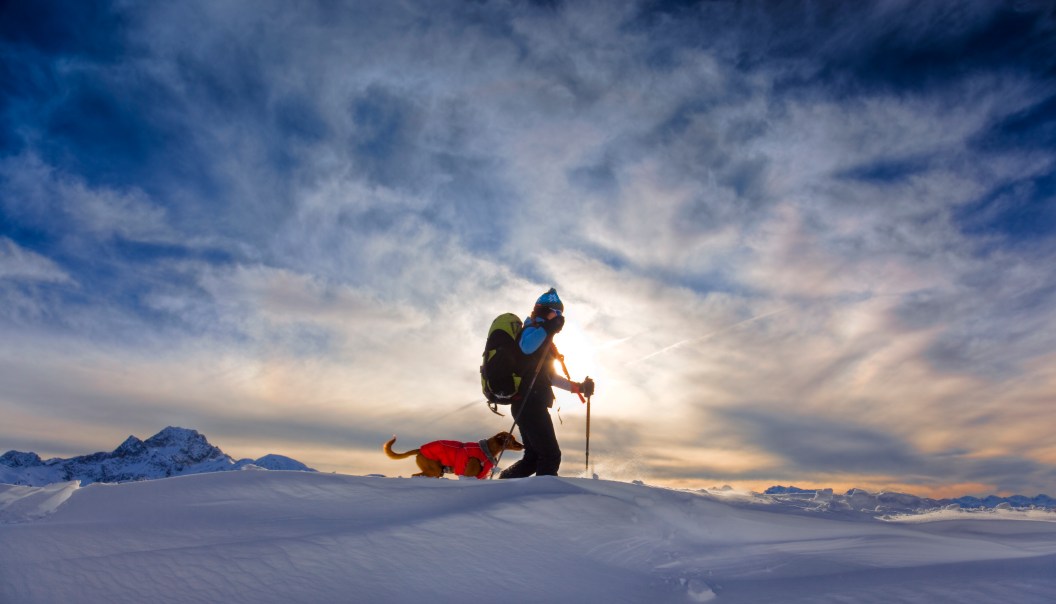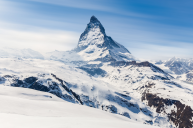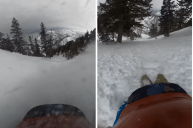One of the best parts about winter is playing in the snow with a snowmobile, snowshoes, or skis. But, while these are all some of my very favorite things to do as an avid backcountry skier and mountaineering guide in Alaska, I also know that wintertime in the mountains poses deadly risks—the scariest of which is certainly avalanches.
Unlike hypothermia and frostbite, the risk for which can be mitigated with some smart winter layering strategies, avalanches are far more difficult to control, and predict, and even harder to survive.
Avalanches are incredibly destructive forces of nature capable of taking out power lines, houses, and even freight trains. In fact, avalanches kill an average of 28 people in the U.S. each winter. Despite outreach efforts by avalanche centers and expanding avalanche education programs, many people venture into the backcountry without ever knowing they're in danger of being caught in an avalanche in the first place.
Between my time as a backcountry skier and mountaineering guide, I've been playing and working in avalanche terrain for well over a decade. I've also taught avalanche education courses for two years and hold an AIAIRE Avalanche Professional certification. I maintain that the best way to survive an avalanche is to never get caught in one in the first place. We're going to change that. Consider this your first introduction to avalanche education.
What Exactly Is an Avalanche?
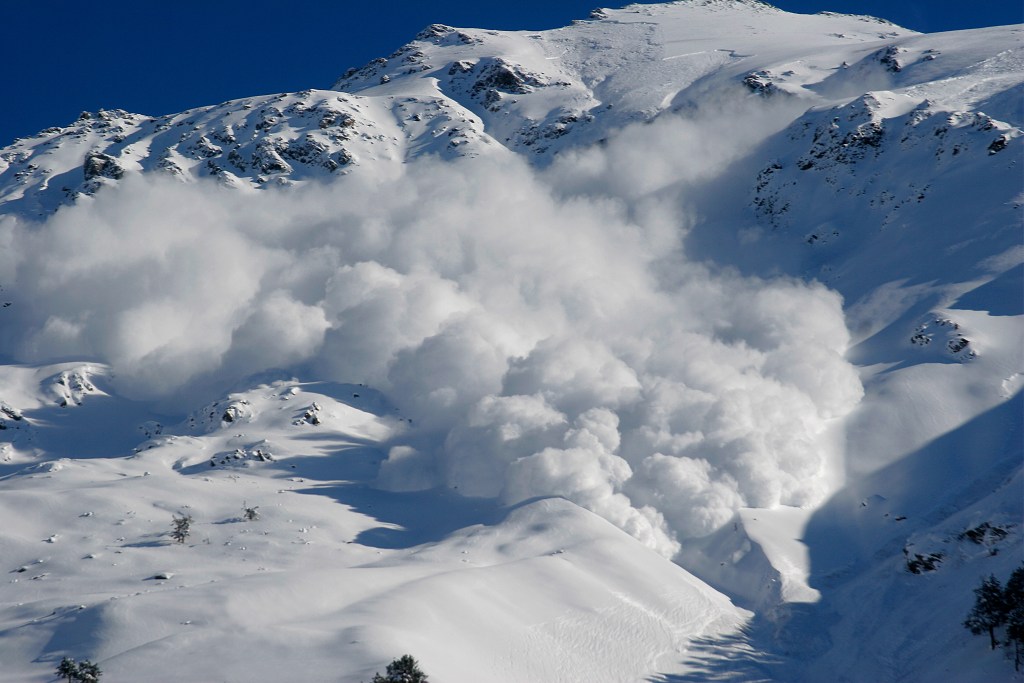
Getty Images, med_ved
Avalanches are, quite simply, slabs of snow that move downhill. But they're not random acts of nature; they require a recipe to form:
- Avalanches require the snow to form a cohesive slab. These often form after storms or wind events.
- That slab of snow needs to be resting on a weak layer within the snowpack, like a crust of ice or even the ground. This is the layer that the avalanche will slide off of.
- Avalanches need a slope that is steep enough for gravity to allow it to slide. Most avalanches occur on slopes that have an incline of 30 to 45 degrees, which is basically the perfect incline for a good sledding hill or good skiing hill. Below 30 degrees, and the slope is too shallow for avalanches to slide. Above 45 degrees, and the slope is too steep for snow to create a slab.
- Lastly, an avalanche starts with a trigger to set it off. These can be natural, like warming temperatures, heavy snow, or earthquakes. Avalanches can also be caused by human triggers, like skiers, snowmobiles, or hikers. You can't really control natural triggers—though you can avoid places where they may happen—but you can control whether or not you trigger an avalanche.
Where Do Avalanches Occur?

Getty Images, wakr10
Many people assume that avalanches only occur on massive mountains where people are skiing or snowmobiling. In fact, avalanches can occur anywhere there is enough snow to slide and a slope steep enough (which is, again an incline of 30 to 45 degrees).
That means winter hikers, snowshoers, and sledders are at avalanche risk just as much as skiers, ice climbers, and snowmobilers.
There are some places where avalanches are more common, such as above the treeline where there are no trees to anchor the snow, or in Colorado (where everywhere is practically avalanche country) where weak snow layers have formed for years.
Regardless of where you are (other than completely flat terrain), you should treat every steep slope loaded with snow as a potential danger.
How to Prepare to Head Into the Backcountry
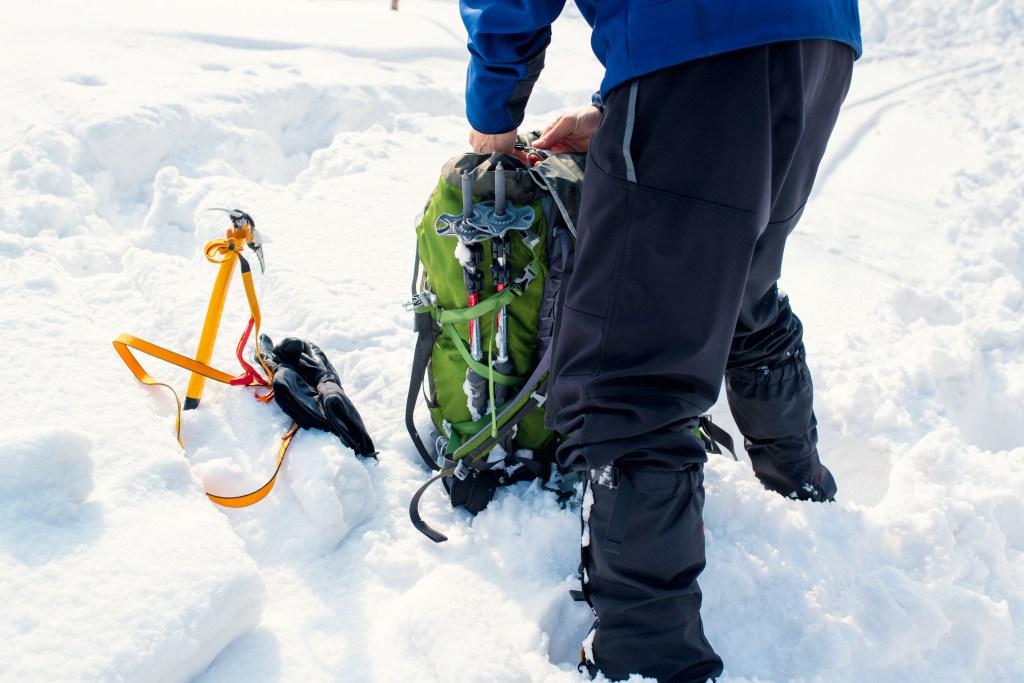
Getty Images, JGalione
If you have plans to enter avalanche terrain—remember, that's anywhere with snowy, steep slopes—your preparation must begin long before you set foot in the mountains. After all, by the time you've set off an avalanche, it's likely too late to do much to save yourself.
The best avalanche intervention is prevention, and that starts at home with these four steps:
1. Get a Formal Avalanche Safety Education
If you spend any time in the backcountry in winter, your first step is to learn everything you possibly can about avalanches and avalanche prevention. This means seeking some formal education (like an avi course) where you'll learn how to recognize avalanche danger, how to read an avalanche forecast, what gear you need, and how to use it.
Luckily, plenty of courses fill the bill:
- Casual adventurers can learn a lot from Know Before You Go, an online collaboration of several avalanche centers that offer free avalanche awareness classes.
- Local avalanche centers also often offer avalanche courses, as does the American Institute for avalanche Research and Education (AIARE).
- If you'll be recreating in avalanche terrain frequently, I suggest you take AIARE's Level 1 avalanche course—it's a three-day course that's based in the field, teaching you how to assess avalanche terrain and snow packs and perform a rescue.
2. Read the Avalanche Forecast
Avalanche centers release forecasts for avalanche danger for certain mountainous zones in the United States. These forecasts offer in-depth analyses of avalanche danger, as well as an easier-to-read danger scale: 1 (green) means low avalanche danger, while 4 (red) means high avalanche danger.
You can find all of the avalanche forecast zones at Avalanche.org. Make sure you check out the forecast for whatever zone you'll be recreating in—and check it the morning before you head out, as conditions can change quickly. Carefully read the forecast, and adjust your plans accordingly.
3. Find Responsible Activity Partners
For starters, you must never venture into avalanche terrain alone. If you're buried and alone, rescue will be nearly impossible.
But, like any outdoor activity, you want to make sure you have quality partners with you when you go into avalanche terrain.
Only choose partners that also have an avalanche education, and make sure they are people who are flexible, open, and willing to discuss different options. Bonus points if they're women: A 2010 study showed that having a woman on your team reduces the risk of your party being caught in an avalanche.
4. Pack Avalanche Safety Gear
If you're venturing into any snowy, sloped terrain, you'll need specialized gear so that, if an avalanche were to occur, you and your partners would be able to rescue each other. Highly preventable avalanche deaths happen almost every year because someone doesn't have the right gear.
At the minimum, you'll need an avalanche transceiver—also called an avalanche beacon—to help you find buried victims (and be found yourself), an avalanche probe to help pinpoint buried victims, and a specialized avalanche shovel to dig them out. All these are required gear for each member in your party, and all of you should take an avalanche class to learn how to use the gear properly, as well. If you're fully buried in an avalanche and you don't have an avalanche transceiver that's powered on, or your partners don't know how to use theirs, the only thing rescuers are going to find is your dead body.
Many skiers and snowboarders also opt to use an avalanche airbag. These are highly specialized pieces of gear that, when deployed, may help you stay afloat when caught in an avalanche.
How to Avoid Avalanches in the Backcountry
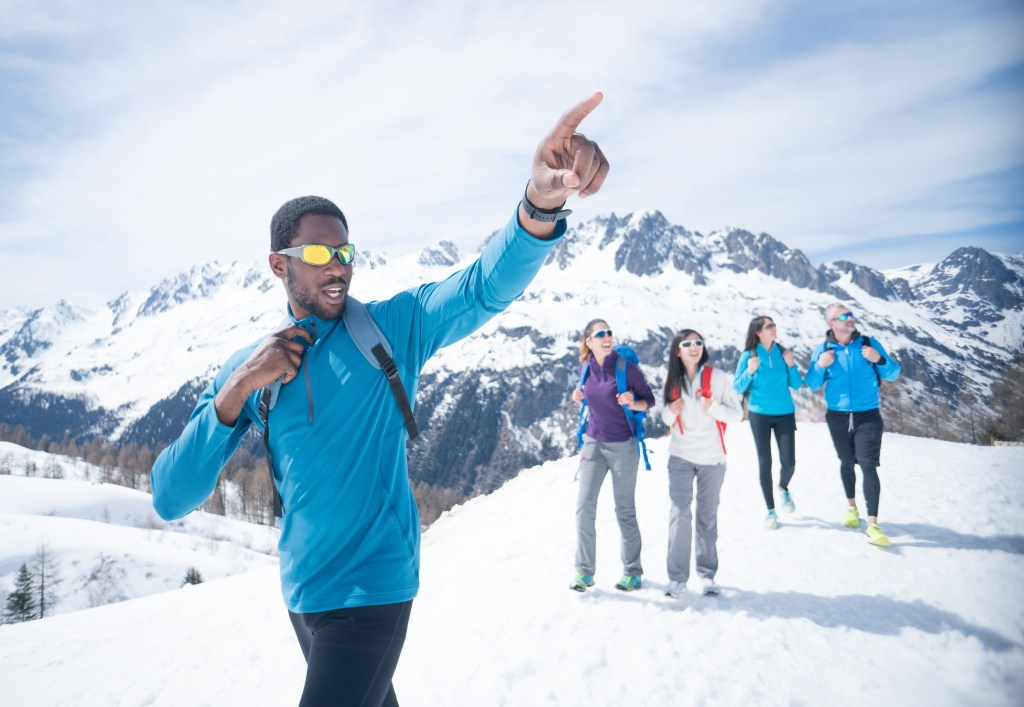
Getty Images, andresr
Once you've done your at-home preparation, it's time to head out into the backcountry. Even if the avalanche forecast is low, you need to keep your head up and your plans flexible. Things change quickly in the backcountry, and you don't want to be sucked into a situation that's easily avoidable.
Recognize and Avoid Avalanche Terrain
As described above, avalanches only occur on slopes that are at the correct incline to slide, also known as avalanche terrain. Therefore, the easiest way to avoid being caught in an avalanche is to avoid going into avalanche terrain to begin with. Learn to identify avalanche terrain long before you get there, and choose routes around it that are shallower or follow ridgelines. Also, be aware of what's above you; if there is a steep slope above you, the avalanche run-out path could sweep you down even if you aren't standing on the actual slope.
Watch for Red Flags and Changing Conditions
Seeing a favorable avalanche forecast in the morning is a good sign, but conditions are always changing in the backcountry. Learn to recognize the red flags of worsening avalanche conditions: seeing recent avalanches in areas that you want to travel, cracking or collapsing snow that makes a "whumpf" sound, sudden, heavy snowfall or rain, snow that's been blown or is blowing into piles and ridges, and rapid melting. All of these are signs that the snowpack may be becoming unstable and more likely to avalanche, a.k.a. prime avalanche terrain. If you encounter them outside, avoid crossing the area at all costs. Change your route to a flatter one, or go home.
Move One at a Time
If, for whatever reason, you have to move through avalanche terrain, do so one at a time. This ensures that only one person is exposed to avalanche danger at any one time, increasing the number of potential rescuers if something were to go wrong. Multiple-person avalanche burials are every winter backcountry user's worst nightmare; they're incredibly difficult rescues with low chances of survival.
How to Survive an Avalanche

Getty Images, BrilliantEye
Despite all your careful planning and staying aware in the backcountry, you could still be caught in an avalanche. Hopefully, your friends are well-trained in avalanche rescue and are ready to respond; the longer you're buried, the worse your chances.
These actions during an avalanche may increase your odds of survival. Just keep in mind that avalanches are incredibly destructive forces of nature. These tips are a last resort; again, the best way to survive an avalanche is to not get caught in one at all.
1. Deploy Your Airbag
If you're wearing an avalanche airbag, deploy it the first moment you can. The avalanche airbag will inflate, protecting your head and neck from trauma and help keep you towards the surface of the avalanche. It may also create an air pocket to prevent snow from obstructing your airway.
2. Shout to Your Partners
As soon as you think you may be caught in an avalanche, begin shouting. If your partners can keep an eye on you while you're caught, they may be able to find your burial spot more easily, resulting in a quicker rescue.
3. Swim to Stay on Top of Snow
Avalanches are a bit like fast-flowing rivers. If you can remain on top of the snow, swim diagonally across the avalanche and try to reach the edge where the snow isn't moving as fast. If you aren't able to swim, try to stay on your back with your feet pointed downhill so your head is less likely to hit any rocks or trees.
4. Create an Air Pocket
If you're in imminent danger of being buried, try to create an air pocket, or additional air space, in front of your face. Around 85% of avalanche fatalities occur because of suffocation; creating an air pocket will buy you more time while your partners unbury you, increasing your chances of survival.
Once the avalanche stops and you're buried, it will feel like being mired in concrete and you won't be able to move.
To create an air pocket, bring your elbows or hands near your head while the moving snow takes you down. If you have an avalanche bag on, it will help create the air pocket.
5. Expect Injuries
Just because you didn't asphyxiate under the snow doesn't mean you'll be alright once you're pulled from the avalanche. Avalanches are incredibly violent and could sweep you off cliffs or into rocks and trees. Friends of mine who were avalanche victims have come away with everything from broken femurs to broken backs to traumatic brain injuries. At the very least, you will be well on your way to hypothermia and frostbite by the time you're uncovered. Make sure you and your partners carry satellite communication devices to call for rescue and full first aid kits and are trained in using them.
6. Learn From Your Mistakes
In most avalanche accidents, there's an element of human error that led to the avalanche being triggered or someone being in its path. If you're lucky enough to survive being buried, thoroughly and objectively analyze your and your partners' decision-making for that day and learn from your mistakes.
You also don't have to wait to be caught in an avalanche to do this. Avalanche.org maintains a database of reported avalanche fatalities with detailed accident reports. If you can handle reading the details, you can learn from others' mistakes before you make your own.
